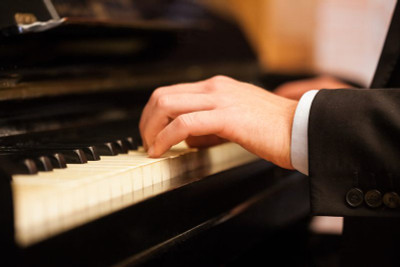 10th Mar 2017
10th Mar 2017
Treating musicians with Physical Therapy
How physical therapy can help symptoms associated with playing musical instruments
Musicians are a population in physical therapy that don’t get much coverage. Their injuries may not come from the sometimes brutal impact that athletes can sustain, but their injuries can be debilitating nonetheless. Whether playing as a hobby or a professional musician, playing an instrument can cause a host of problems including:
- Repetitive use injuries like carpal tunnel
- Migraines and chronic headaches associated with poor posture
- Shoulder pain and tendonitis
- Tennis elbow or epicondylitis
- Involuntary muscle contractions like dystonia

What’s particularly difficult is that musicians can suffer from a combination of these issues leading to complex rehabilitative needs. It’s this complexity that leads to the need to use modalities that can help efficiently and effectively reduce the acute symptoms in order for musicians to be able to participate in postural training and strengthening.
The Best Modalities to Use When Treating Musicians
- Ultrasound Therapy: Ultrasound therapy machines are appropriate to use for most pain and repetitive injuries musician’s may suffer from including carpal tunnel. With smaller sized ultrasound applicators available it’s possible to treat smaller surface areas like the wrist or larger areas like the shoulder or back. In a study published in BioMed Central Musculoskeletal Disorders found that ultrasound therapy in combination with wrist orthosis was effective in reducing the pain associated with carpal tunnel.
- Cold Compression Therapy: Musicians can sometimes spend hours in a slouched posture playing instruments in an un-ergonomic set-up. This can lead to poor posture and an inability to hold the head/neck and shoulders in neutral. This can lead to chronic headaches and migraines. Cold compression therapy with its various available wraps can give significant improvement to headache pain. The analgesic effects provided by cold therapy combine with the edema reducing benefits of compression and work together to relieve impinged nerves that can create chronic headaches brought on by poor posture.
- Heat Therapy: Heat therapy in the form of hot packs or whirlpool therapy is helpful in treating chronic shoulder pain. Whirlpool therapy specifically has been used by sports therapists for years for its ability to reduce pain and improve range of motion in injured athletes. The same can be said for musicians suffering from shoulder pain.
- Low Level Laser Therapy: Low Level Laser Therapy is another great modality to use for pain and swelling relief for injuries including tennis elbow. A study published in the Journal of Clinical Medicine and Surgery found that pulsed low level laser therapy was effective in reducing tennis elbow pain. Further, the study concluded that pulsed LLLT was beneficial when treating trigger points in combination with a scanner technique.
- Biofeedback: Dystonia is a disorder that includes involuntary muscle contractions. These contractions can cause repetitive movements, discomfort and/or pain. An abstract published in Applied Psychophysiology and Biofeedback found that the use of biofeedback machines was beneficial in reducing the over-activity, discomfort and pain associated with hand dystonia.
While the injuries a musician suffers may not be as dramatic as some sports injuries, they can be debilitating and require the same rehabilitative options in order to return to daily activities pain-free and with full function.





